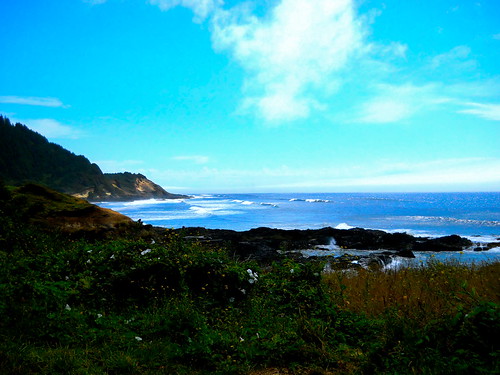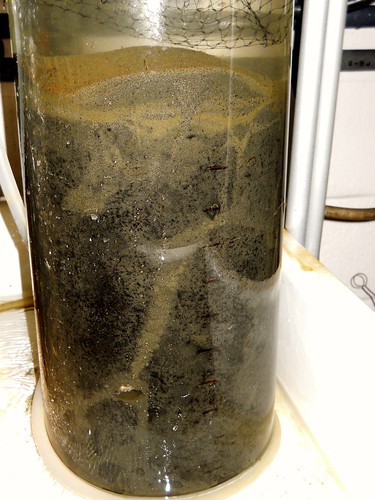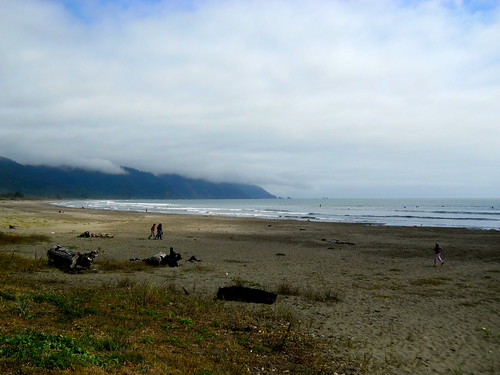Wow, I cannot believe 8 weeks have come and gone already! Our final presentations are just two days away and as I work on putting everything together I am amazed by how much I have done this summer working with the EPA. This past week was a scramble to obtain as much data and results as possible and involved many days in the field.
After going through all of our pictures, we found some interesting results! With our manipulative plots, the boxes we had put into the sediment were not showing many signs of sediment oxidation, so to see if anything was going on in the sediment we placed IRIS tubes into the center of each plot. We found that in the plots with the most algae, there was a large amount of sulfides in the sediment signaling anoxic conditions. Additionally, the plots that were placed in shrimp beds showed a lot of variance in how much sulfides the sediment there had. We found that the shrimp burrows act like highways for oxygenated water to travel down into the sediment, but we also found some differences between the two species of shrimp (ghost and mud).
In the ghost shrimp area the IRIS tube showed sulfides in sediment that were deeper than in the mud shrimp areas. One hypothesis for this is the fact that ghost shrimp burrows are not as stable as mud shrimp burrows. Mud shrimp create a glue like substance that holds their burrows together, thus they are not constantly having to re-make them and water is able to travel through their burrows longer. Mud shrimp on the other hand are constantly burrowing as they do not produce any substance that helps stabilize their burrows. This might cause them to collapse more easily and thus limit the amount of oxygenated water that can travel through them.
In the lab we have also been finding some telling results. After completely covering the glass cylinders last week, I noticed that some of the algae is beginning to rot. No large changes have been observed from the sides of the chambers, so we have placed IRIS tubes into each cylinder and we hope they will show us sulfide concentrations under the varying conditions of the cylinders.
After a busy week at work, a group of interns from Hatfield trekked down to California for a weekend of camping and hiking in Redwood National Park. It was absolutely incredible to see such massive living things. The whole park seemed like it was in a different world and a far cry from reality. Standing next to a Redwood really puts your life into perspective!
The goal for the weekend was to find the Grove of the Titans, a secret grove of redwoods that contains some of the world’s tallest. The location is kept secret and they are not located near any trails, so the group of us blazed our own trail through the magnificent giants with a list of clues we found online. I’m sorry to report that their location still remains a secret, as we were unable to find them. However no disappointment was felt among the group as we saw some others that I’m sure must rival the Titans in size!
It wouldn’t be a trip to California without a little surfing! On Saturday and Sunday I was able to further practice my “skills” with some friends on the waves in Crescent City. I finally learned how to stand up and ride a wave all the way to shore! Plus the water was about 60 degrees which was much more pleasant than the 45 degree water off the coast of Oregon!
My time on the west coast is winding down and I wish there was a big “pause” button I could push and just stay here in Oregon forever. I’ve been having the best summer of my life and cannot wait to share with others on Friday about my research and exciting adventures I’ve been having in the Beaver State!







